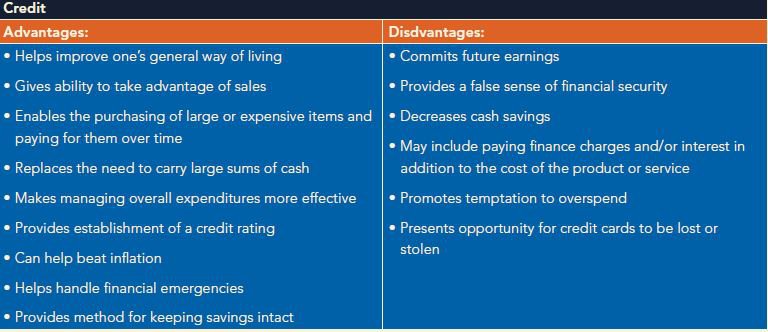Wyoming Credit Union: Trusted Financial Solutions for Every Demand
Wyoming Credit Union: Trusted Financial Solutions for Every Demand
Blog Article
The Ultimate Overview to Comprehending Credit Score Unions
Debt unions stand as unique financial entities, rooted in concepts of shared assistance and member-driven operations. As we browse through the complexities of credit rating unions, an insightful trip awaits to lose light on these member-focused establishments and just how they vary from standard financial institutions.
What Are Lending Institution?
Lending institution are member-owned economic institutions that offer a series of banking solutions to their members. Unlike conventional banks, cooperative credit union operate as not-for-profit organizations, implying their primary emphasis is on offering their participants instead of making best use of earnings. Participants of a credit rating union generally share an usual bond, such as functioning for the very same company, coming from the exact same area, or being part of the exact same organization.
One of the essential benefits of cooperative credit union is that they often offer greater rate of interest rates on financial savings accounts and lower rates of interest on lendings contrasted to financial institutions. This is due to the fact that cooperative credit union are structured to benefit their members directly, allowing them to pass on their profits in the kind of far better rates and fewer costs. In addition, cooperative credit union are known for their individualized client service, as they prioritize developing relationships with their participants to comprehend their one-of-a-kind economic requirements and objectives.
Background and Development of Debt Unions

The origins of member-owned monetary cooperatives, recognized today as cooperative credit union, trace back to a time when communities sought choices to conventional financial institutions. The concept of lending institution stem in the 19th century in Europe, with Friedrich Wilhelm Raiffeisen usually credited as the pioneer of the cooperative financial activity (Wyoming Federal Credit Union). Raiffeisen started the first recognized lending institution in Germany in the mid-1800s, highlighting neighborhood assistance and self-help principles
The development of lending institution proceeded in North America, where Alphonse Desjardins developed the initial lending institution in Canada in 1900. Quickly after, in 1909, the first U.S. lending institution was formed in New Hampshire by a group of Franco-American immigrants. These very early lending institution operated on the essential concepts of mutual aid, democratic control, and participant ownership.
With time, lending institution have actually grown in popularity worldwide as a result of their not-for-profit framework, concentrate on serving participants, and supplying affordable monetary items and solutions. Today, cooperative credit union play a vital role in the economic industry, offering community-oriented and accessible financial choices for businesses and people alike.
Membership and Qualification Standards
Subscription at a debt union is typically limited to people fulfilling specific qualification requirements based on the establishment's founding concepts and regulative requirements. Some credit scores unions may just offer individuals that live or work in a specific area, while others may be tailored to employees of a specific firm or participants of a specific association.
Furthermore, cooperative credit union are structured as not-for-profit organizations, implying that their main goal is to serve their participants instead than generate revenues for investors. This focus on member solution frequently translates right into even more tailored attention, lower charges, and affordable rate of interest on cost savings and loans accounts. By satisfying the eligibility criteria and becoming a participant of a cooperative credit union, individuals can access a variety of monetary product or services customized to their specific demands.
Solutions and Products Used
One of the key elements that sets credit history unions apart is the diverse array of financial services and items they offer to their participants. Credit report unions commonly offer typical banking solutions such as savings and inspecting accounts, financings, and credit rating cards.
In addition, lending institution usually supply convenient online and mobile banking options for members to quickly handle their funds. They may offer perks such as shared branching, allowing members to access their accounts at various other lending institution across the nation. Some cooperative credit union also offer insurance policy products Wyoming Credit Union like auto, home, and life insurance coverage to aid members shield their assets and enjoyed ones.
Along with monetary solutions, lending institution regularly take part in neighborhood outreach programs and economic education initiatives to support their members in attaining their monetary objectives.
Advantages of Financial With Credit History Unions
When thinking about economic establishments, exploring the advantages of financial with credit unions discloses one-of-a-kind benefits for members seeking tailored service and affordable rates. Unlike large banks, credit score unions are member-owned and focus on building solid relationships with their participants. Overall, banking with a debt union can give a much more tailored, affordable, and member-centric economic experience.
Verdict
:max_bytes(150000):strip_icc()/6-benefits-of-using-a-credit-union.aspx_final-6e501699186e429ab6458d9e36ebe4a1.jpg)
Credit history unions are member-owned monetary establishments that offer an array of financial services to their members. The idea of credit history unions originated in the 19th century in Europe, with Friedrich Wilhelm Raiffeisen usually attributed as the leader of the participating financial activity.The evolution of credit report unions proceeded in North America, where Alphonse Desjardins developed the initial credit union in Canada in 1900. Debt unions generally offer conventional financial solutions such as savings and examining accounts, fundings, and credit rating cards.When taking into consideration financial institutions, checking out the benefits of financial with credit unions discloses one-of-a-kind benefits for members seeking customized solution and affordable rates.
Report this page